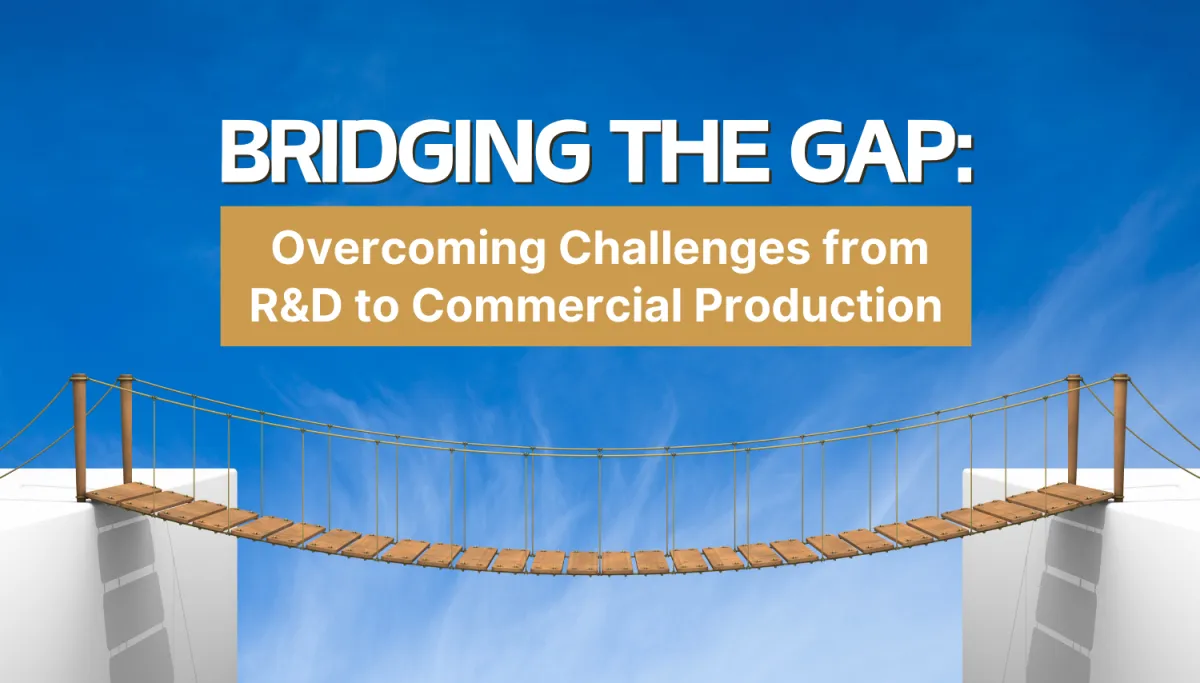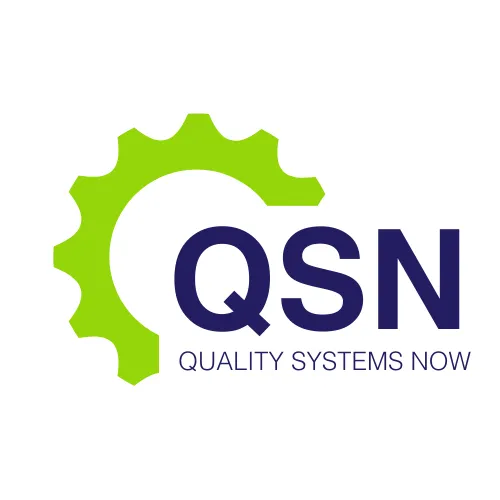LATEST NEWS

Bridging the Gap: Overcoming Challenges from R&D to Commercial Production
The transition from research and development (R&D) to commercialization is a critical phase for companies in sectors such as pharmaceuticals, biotechnology, and advanced manufacturing. This process involves scaling up production while maintaining the integrity, safety, and quality of the product. While scientific breakthroughs in the R&D phase often garner attention, the equally important task of ensuring successful commercialization requires addressing complex challenges. These challenges include maintaining quality during production scaling, integrating regulatory requirements into operational frameworks, and seamlessly transferring knowledge and processes from R&D to production.
Helping our clients overcome these challenges is what we do - let's have a chat
Scaling Production While Maintaining Quality
A common hurdle in transitioning from a lab-scale environment to full-scale manufacturing is ensuring quality and consistency. While laboratory processes are typically optimized for precision and small-scale experimentation, scaling up introduces variables that can compromise product integrity. For instance, temperature gradients, mixing times, and equipment-specific differences can influence product characteristics.
To mitigate such risks, organizations must thoroughly validate their equipment and processes. Validation ensures that scaled-up production meets predetermined specifications consistently. This is especially important for highly regulated industries like pharmaceuticals, where deviations in product quality can have serious implications for safety and efficacy. Equipment qualification (Installation Qualification, Operational Qualification, and Performance Qualification) becomes essential to verify that all machinery performs as intended under the increased demands of large-scale operations.
The Role of a Quality Management System (QMS)
An often-overlooked challenge is the underutilization of a robust Quality Management System (QMS) during early-stage development. Many organizations delay implementing QMS frameworks, mistakenly believing that full compliance is only necessary during late-stage development or post-commercialization. This approach can lead to fragmented documentation, non-standardized processes, and significant compliance gaps.
Instead, companies should adopt a phased approach to QMS integration, planning when full compliance will be required based on the project timeline. Early incorporation of a QMS allows for the systematic documentation of critical activities, including risk analyses, design reviews, and proof of concept evaluations. While early-stage development may not require stringent regulatory compliance, building the foundation for future compliance ensures a smoother transition into commercialization.
Documentation and Records
Rigorous documentation and record-keeping are cornerstones of successful commercialization. Regulatory authorities such as the U.S. Food and Drug Administration (FDA) and the European Medicines Agency (EMA) require detailed records that trace the evolution of a product's development. These include design control documentation, risk management files, and validation protocols. Maintaining thorough records not only demonstrates compliance but also facilitates troubleshooting, should deviations or failures occur during production.
Effective documentation practices also aid in knowledge transfer from R&D to production teams. Without clear records, valuable insights and lessons from the development phase may be lost, leading to inefficiencies and increased risks during scaling.
Transitioning to Operational-Scale Manufacturing
Operational-scale manufacturing demands more than just replicating lab-scale processes. Facilities and equipment must be optimized to handle increased production volumes, often requiring significant investment in infrastructure. Moreover, the operational environment must be designed to comply with Good Manufacturing Practices (GMP) and other relevant regulatory standards.
Facility and Equipment Considerations
Scaling production involves not only process optimization but also ensuring that facility systems—such as HVAC, water for injection (WFI), and cleanroom classifications—meet regulatory and operational requirements. The choice of production equipment, including bioreactors, mixers, and filling machines, must align with the product's critical process parameters (CPPs). Failure to account for these considerations can result in bottlenecks, contamination risks, and compliance issues.
Knowledge and Process Transfer
A critical step in transitioning to full-scale production is the formal transfer of product and process specifications from R&D to production. This step, often referred to as technology transfer, involves transferring all relevant knowledge, including process design, critical quality attributes (CQAs), and analytical methods.
Key components of a successful technology transfer include:
Documentation: Detailed process descriptions, equipment specifications, and validation reports.
Training: Ensuring that production staff are adequately trained on new processes, equipment, and quality standards.
Collaboration: Close collaboration between R&D, production, and quality teams to address any discrepancies or challenges that arise during transfer.
Training production staff is particularly important, as they are responsible for executing processes at scale. Comprehensive training programs should cover not only standard operating procedures (SOPs) but also potential deviations and troubleshooting strategies.
Regulatory Compliance and Its Impact on Commercialization
Regulatory compliance is a non-negotiable aspect of commercialization, particularly in highly regulated sectors. While the specific requirements vary by industry and region, a common thread is the need for stringent quality controls and robust documentation.
For example, in pharmaceuticals, compliance with GMP guidelines ensures that products are consistently produced and controlled according to quality standards. This includes everything from raw material sourcing to finished product testing. Non-compliance can lead to costly delays, product recalls, or even regulatory sanctions, underscoring the importance of embedding compliance into every stage of the commercialization process.
Strategic Planning for a Smooth Transition
Given the complexity of transitioning from R&D to commercialization, strategic planning is essential. Companies should consider the following strategies to navigate this critical phase successfully:
Early Integration of Compliance Frameworks: Start integrating compliance requirements into the R&D phase to avoid delays and gaps later in the project.
Cross-Functional Collaboration: Foster collaboration between R&D, production, and quality assurance teams to ensure alignment and knowledge transfer.
Scalable Process Design: Design processes with scalability in mind, considering potential challenges such as equipment limitations and variable raw material supply.
Proactive Risk Management: Conduct comprehensive risk analyses to identify and mitigate potential challenges before scaling production.
Continuous Improvement: Establish mechanisms for ongoing process optimization and quality improvement, even after commercialization.
Conclusion
The journey from R&D to commercialization is fraught with challenges, but these can be effectively managed through strategic planning, rigorous documentation, and a commitment to quality. By addressing the key challenges of scaling production, ensuring compliance, and transferring knowledge, organizations can position themselves for long-term success in the marketplace.
Investing in robust systems and fostering a culture of collaboration between R&D and production teams will not only streamline the transition but also lay the foundation for sustained innovation and growth. For companies in highly regulated industries, this is not just a best practice but a necessity for achieving regulatory approval and market success.
